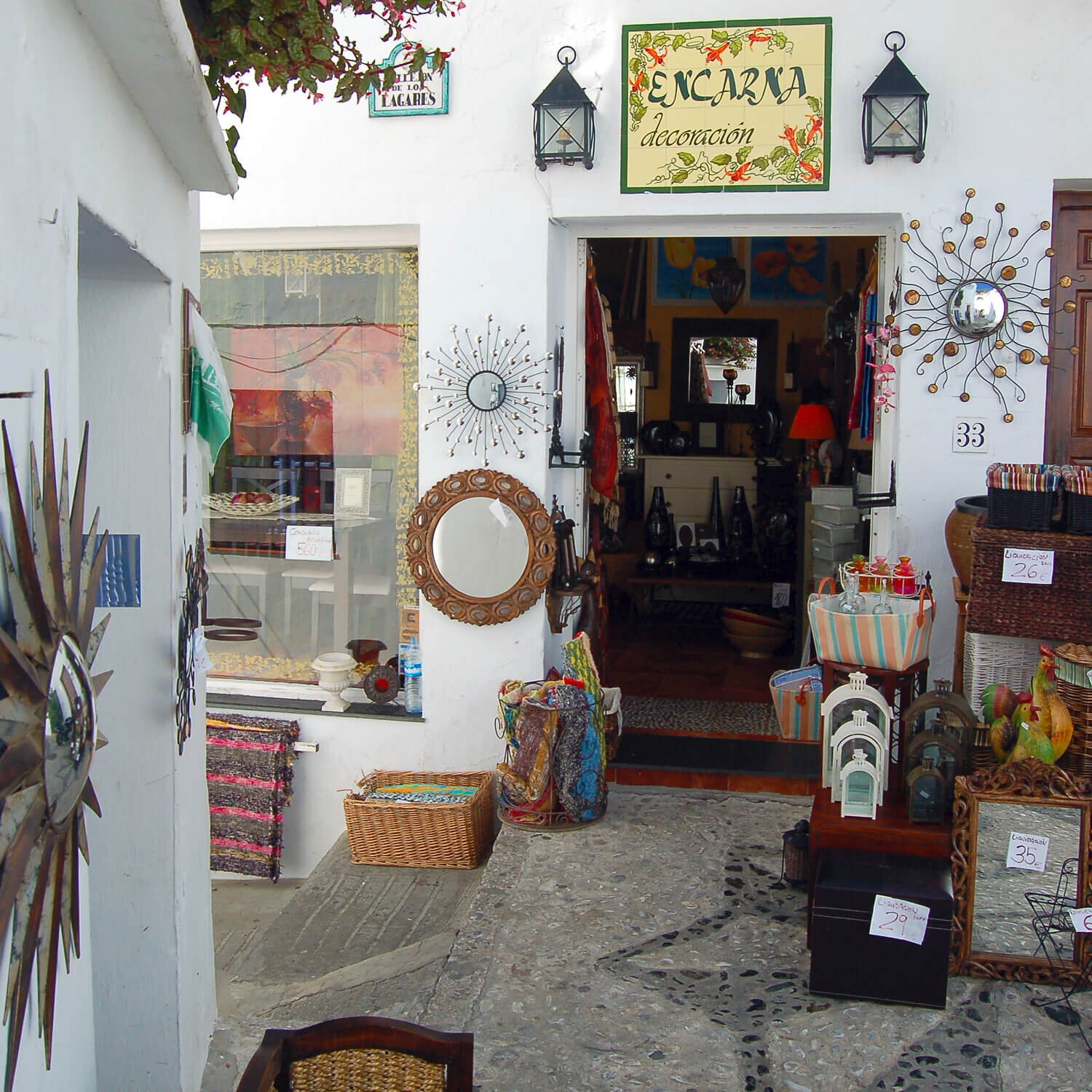
Frigiliana a white village in Andalucia
Frigiliana
Been voted the 'prettiest village in Andalusia' by the Spanish tourism authority
Just seven kilometers north of Nerja is the typical pueblo blanco (white village) of Frigiliana, which sits high on a mountain ridge (330 meter above sea level) overlooking the sea with spectacular panoramic views.
El Fuerte, the hill that climbs above the village, was the scene of the final bloody defeat of the Moors of La Axarquía in their 1569 rebellion
Visitor will be overwhelmed, surprised at how beautiful and sparkling clean a village can be. As you are discovering the streets of Frigiliana, don’t forget to stop and read at least some of the twelve ceramic plaques on the walls of the historic part, which portray the history of the Moorish people in Frigiliana.
Frigiliana
Frigiliana is a tangle of narrow cobbled streets lined by whitewashed houses, their wrought-iron balconies filled with planters of brilliant red geraniums. Small plazas provide shady seating while the village bars are popular with visitors who come here to taste the locally produced wine.
There are also several excellent shops selling pottery and ceramics, including decorative plates with their distinctive Arab design. A number of good restaurants and Tapas bars.
Frigiliana a white village in Andalucia
The church of
Saint Anthony of Padua
in Frigiliana was built in the 17th Century and restored in 1976.
The Church covers an area of 620 square meters and was constructed over an ancient mosque.
Thursday’s
Market Day
Frigiliana before Drones
In the neighbourhood
Nerja
Just 7km south of Frigiliana you will find Nerja a lovely seaside town. Nerja today is a popular international holiday resort, but at the same time managed to keep its own identity and to remain a lively living Andalucian town.
Acebuchal village
is ituated 5km outside Frigiliana, in a stunning valley location in the heart of Sierras de Tejeda, Almijara y Alhama natural park. The village / hamlet was abandent in 1949 and it remained in ruins until 1998 when El Zumbo and his wife Virtudes returned and started to rebuild the village / hamlet Alledegly the original village / hamlet was founded in the 17th Century.
Bar El Acebuchal a good idea make your restaurant reservation in advance.
Nerja Caves
However, Nerja's most spectacular attraction is undoubtedly its fascinating caves located just 4km from the centre of Nerja. The Nerja Caves are located closer to Maro.
Few visitors knew anything about this part of the coast until 1959, when five young boys, out hunting for bats behind Maro discovered a remarkable system of caves and ancient cave paintings
The caves include archaeological treasures such as paintings over 20,000 years old and other pre-historic remains. One of the enormous natural caverns has been transformed into a concert hall, where many performances are staged during July and August every year.
Nerja Caves (Cueva de Nerja) more information, tickets on line …
Playa de Maro
The beach is signed Playa de Maro. From Maro walk down the hillside to the beach allow 15-20 minutes, from the center of Maro, its over 1 km. You are unable to drive all the way down to the beach, however a few minutes walk after you parked your car is worth it. The beach is a mixture of sand and shingle. There is one beach bar. The pretty and charming village of Maro is situated on the coast, 3,5 km to the east of Nerja, about 5-8 minutes drive and it is also served by the local bus service from Nerja.








